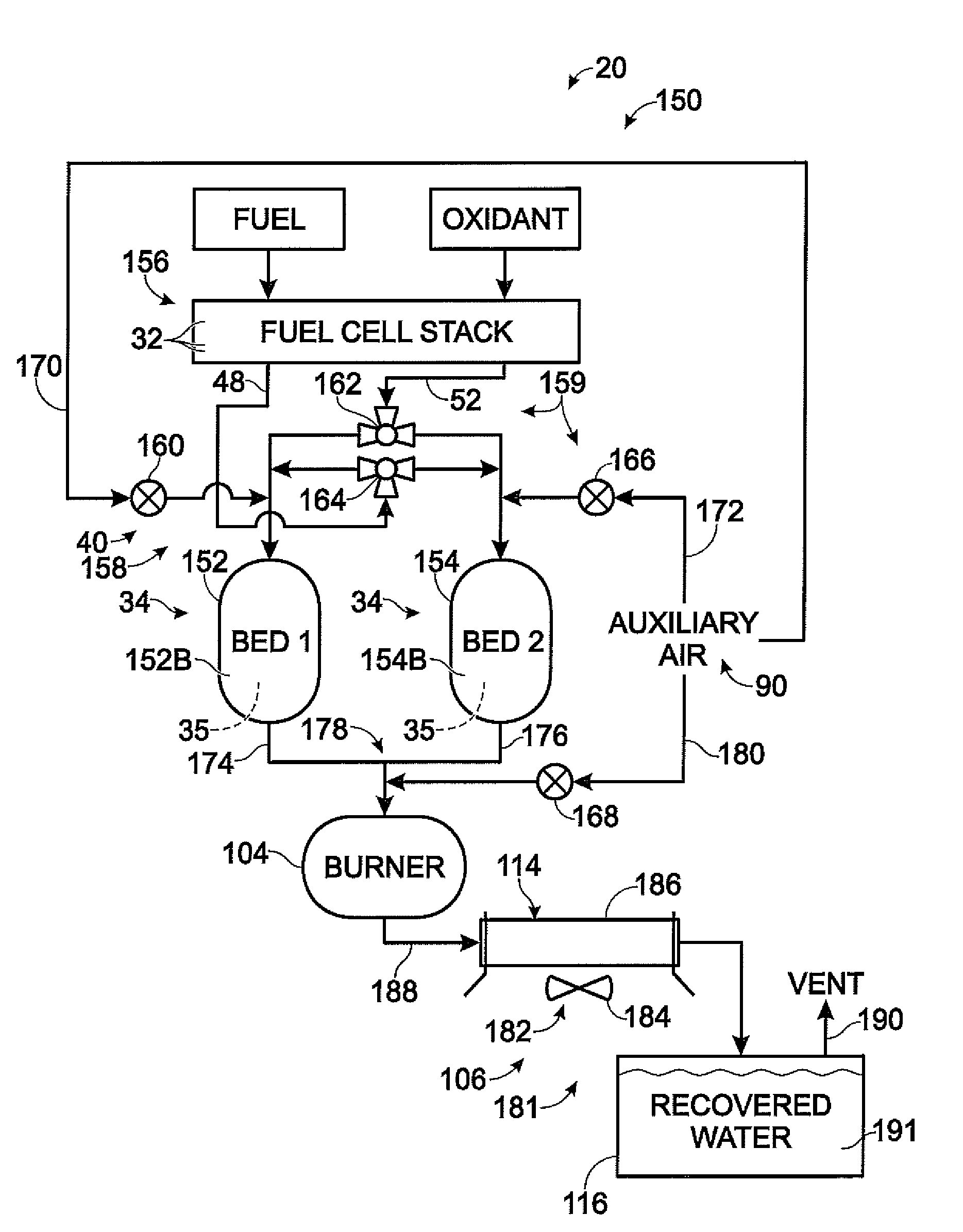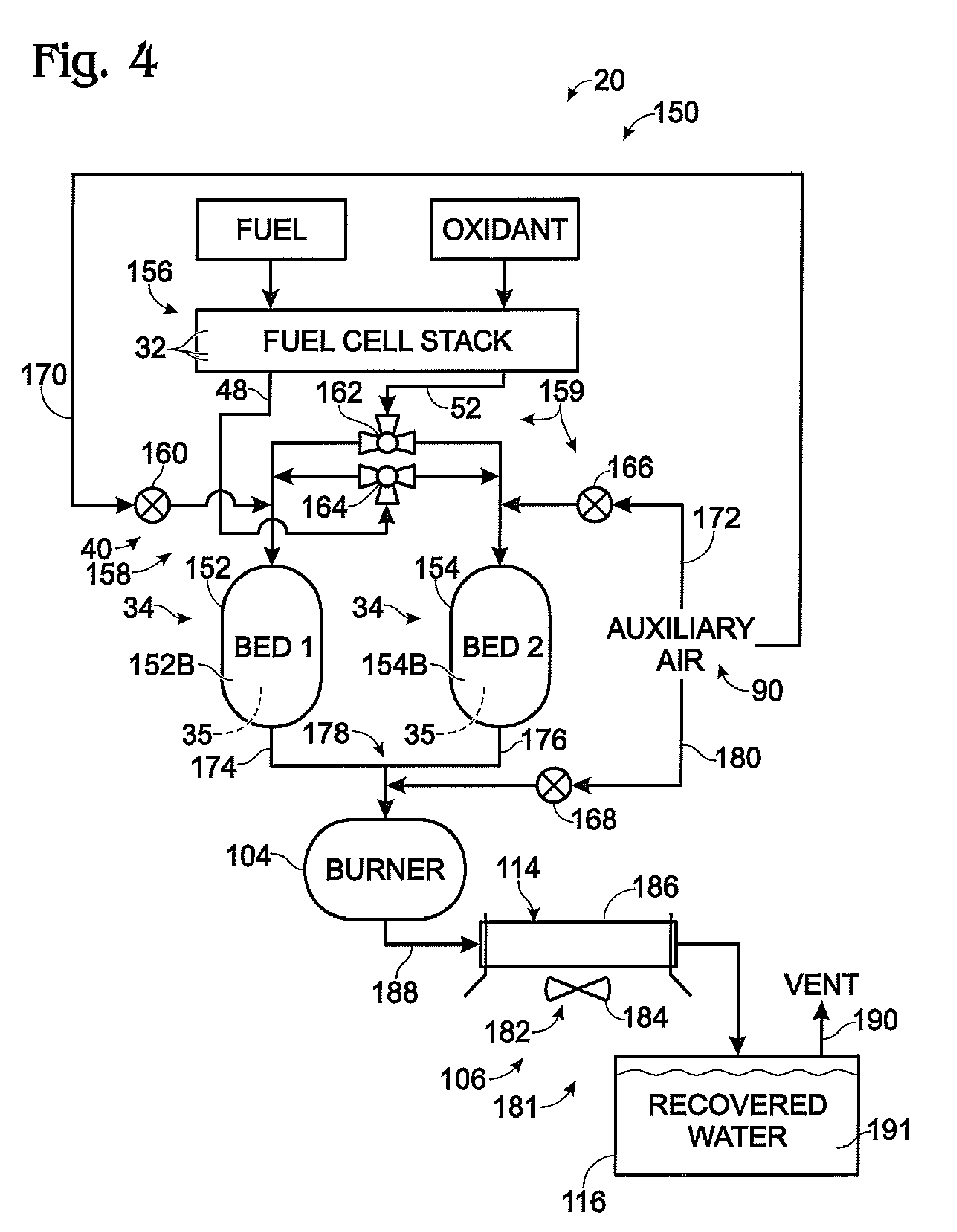Fuel cell systems with water recovery from fuel cell effluent
a fuel cell and effluent technology, applied in the direction of fuel cells, fuel cell control, regenerative fuel cells, etc., can solve the problems of not allowing efficient condensation of water, too much water in the fluid stream for fuel cell system reuse, and difficult to achieve water efficient condensation
- Summary
- Abstract
- Description
- Claims
- Application Information
AI Technical Summary
Benefits of technology
Problems solved by technology
Method used
Image
Examples
Embodiment Construction
[0019]The present disclosure is directed to fuel cell systems, including associated methods and apparatus, that use a desiccant to recover water from fuel cell effluent. A fuel cell system according to the present disclosure may include one or more fuel cells configured to generate electrical output from electrochemical reaction of a supplied fuel and a supplied oxidant while emitting effluent. The effluent may include an anode exhaust, which may provide an exhausted fuel, and a cathode exhaust, which may provide an exhausted oxidant. The fuel cell system also may include a desiccant (i.e., a drying agent) that is disposed downstream of the fuel cells, such as part of one or more dryers, and configured to receive at least a portion of the effluent, such as at least a portion of the anode exhaust, cathode exhaust, or both. The desiccant may bind water from at least a portion of the effluent, such as by adsorption, absorption, or both. Moreover, the desiccant may bind water from one o...
PUM
| Property | Measurement | Unit |
|---|---|---|
| voltage | aaaaa | aaaaa |
| electrical | aaaaa | aaaaa |
| heat | aaaaa | aaaaa |
Abstract
Description
Claims
Application Information
 Login to View More
Login to View More - R&D
- Intellectual Property
- Life Sciences
- Materials
- Tech Scout
- Unparalleled Data Quality
- Higher Quality Content
- 60% Fewer Hallucinations
Browse by: Latest US Patents, China's latest patents, Technical Efficacy Thesaurus, Application Domain, Technology Topic, Popular Technical Reports.
© 2025 PatSnap. All rights reserved.Legal|Privacy policy|Modern Slavery Act Transparency Statement|Sitemap|About US| Contact US: help@patsnap.com



